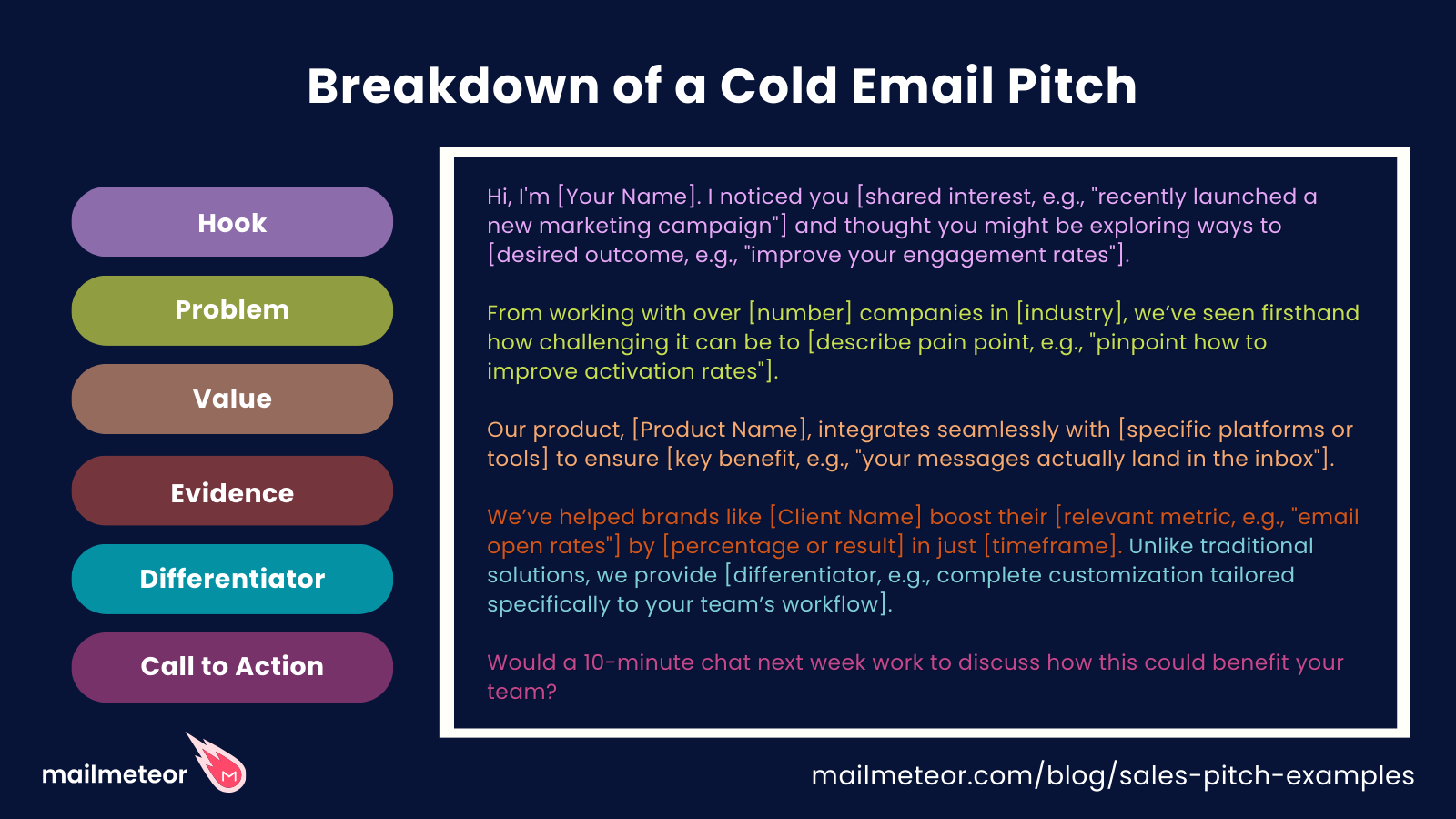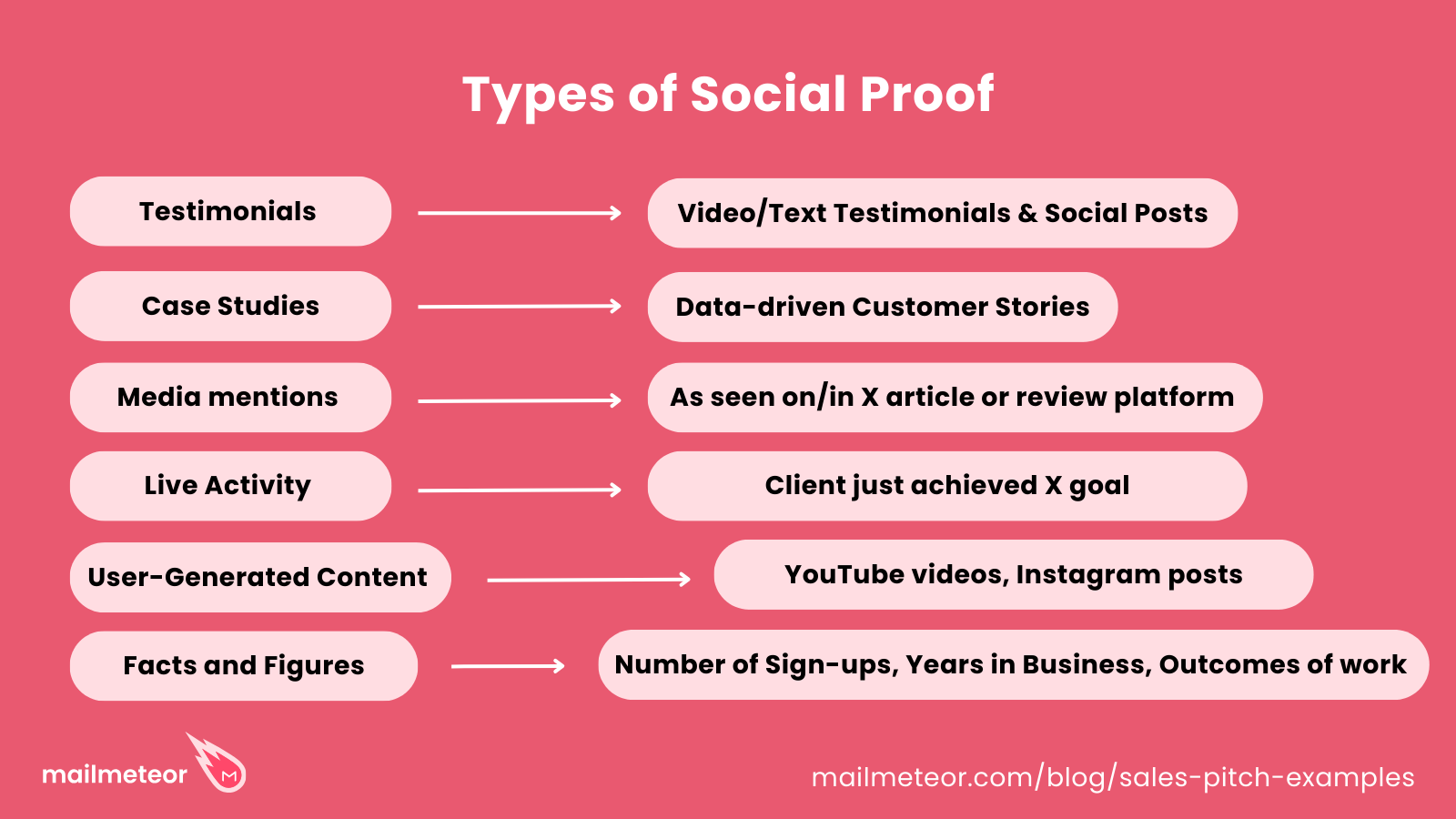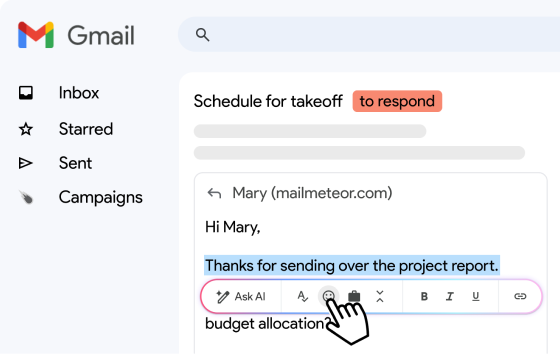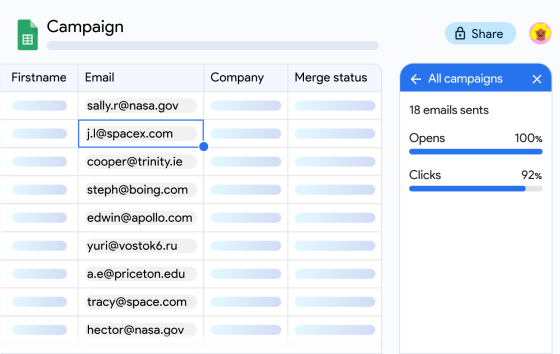Feeling the pressure to craft the perfect pitch?
Rightly so—it’s not like you get endless chances to impress a prospect with different angles each week. Your first pitch leaves a lasting impression.
Pair that with the fact that B2B decision-makers receive, on average, 120 email pitches a day.
To cut through the noise, simply listing the core benefits of your product won’t make prospects leap at the opportunity.
Instead, you need to tailor your pitch to your prospect’s specific pain points and show why your product stands out as a perfect solution.
Feeling intimidated? Don’t worry. The bar is low.
In this article, I’ll break down what makes a compelling sales pitch, the essential elements, how to write one, and share some powerful examples.
Let’s jump in.
What is a Sales Pitch?
A sales pitch is a concise, compelling showcase of your product or service’s value, presented as a cure to your prospect’s pain points. Good pitches even dive into the differentiated value of why other solutions might have failed them before.
Pitches can be given over the phone, in person, or over email, and they’re often delivered to investors, partners, or potential customers. The goal of a pitch isn’t to explain every single detail of your product but to spark curiosity, turning that prospect into a lead you can nurture into a loyal customer.
Crafting a pitch is an art. Many people make the mistake of getting bogged down in talking about themselves. Let’s be honest: nobody likes that—it’s icky. So, when pitching to a prospect, it’s about making it all about how your product is uniquely positioned to solve their problem.
Let’s explore the six core components that make a killer pitch before diving into some examples.
The Six Core Components of a Killer Sales Pitch

Every sales pitch structure should adapt to your prospect and the research you’ve done.
But all successful pitches have six key components:
1. The Hook
You’ve got to grab attention right away. Personalization works best—showing you’ve done your homework can make all the difference. Maybe it’s referencing a recent accomplishment or calling out a shared interest.
The goal? Make your pitch feel unique, not another copy-paste template.
Examples:
- “Is there any reason why you’re not posting on Instagram right now?”
- “I noticed you [shared interest].”
- “Ever wished there was a way to achieve [outcome] without [undesirable thing]?”
2. The Core Problem You Solve
Once you’ve hooked them, bring up the problem they’re likely facing. Personalize this part, so it doesn’t feel generic.
Don’t make the mistake of trying to call them out in a way that makes them feel defensive, e.g. “Are you struggling with X?”
Instead, frame it in a way that show’s either you have experienced the problem or how you’ve solved it for someone else.
Example: “From working with over 100+ SaaS companies, we’ve seen firsthand how hard it can be to pinpoint how to improve your activation rates.”
3. Your Solution
Now it’s time to present your solution. Highlight how it uniquely addresses their pain points, especially if there are existing solutions that fall short. Focus on the differentiator—why your method or product is the missing piece they need.
Example: “Most email tools require tedious setup and still struggle with deliverability. Our product integrates seamlessly with Gmail, ensuring your messages actually land in the inbox.”
4. Proof
This is where you establish trust and credibility. Showcase how your solution has worked for others with similar challenges. Mention notable clients, statistics, or endorsements that make your case compelling.

Example:
“We’ve helped brands like [Client Name] boost their email open rates by 30% in just one month.”
5. CTA (Call to Action)
Your pitch should end with a clear, actionable step, but make sure the ask is small and easy. Instead of asking for a huge commitment upfront, focus on starting a conversation or gauging interest.
Examples:
- “Does that sound like something worth exploring?”
- “Mind if I send over a quick case study?”
- “Would a 10-minute chat next week work to discuss how this could benefit your team?”
- “Does [specific outcome] sound like something you’d want to learn more about?”
6. Anticipate Objections
Address any doubts or concerns they might have preemptively. This shows you understand their hesitations and are prepared to discuss them.
How to Craft Your Sales Pitch to Drive Maximum Impact
1. Understand Your Prospect Deeply
The best way to ensure your pitch hits home is to get beyond surface-level details.
Instead of generic statements like “increase revenue,” tap into the emotional, core pain points that keep your prospects up at night. Understand their desired outcomes and past frustrations, and tailor your pitch to resonate on a deeper level.
2. Personalize Your Pitch with Real Research
You and I both know how easy it is to spot a generic, copy-pasted pitch.
To stand out, prove you’ve done your homework. Reference their latest product launch or a challenge they’ve publicly mentioned. Remember: in a sea of AI-generated pitches, genuine, well-researched messages are your best bet.
3. Frame It Around Pain, Not Gain
People are more motivated to avoid a loss than chase a gain. This concept, known as loss aversion, means it’s easier to sell a painkiller than a vitamin.
I work with clients all the time on refining their sales pitch. I can distrinctly remember one of my clients initially resisted talking about pain, worried it seemed negative. But once they embraced this approach, their engagement rates soared.
Be sure to dig into those “keep you up at night” pains and frame your product as the ideal solution.

4. Don’t Call Your Prospect’s “Baby Ugly”
Andy Whyte, the founder of MEDDICC, once told me that many salespeople fall into the trap of saying, “Hey, I think your website could be a lot better” This can make your prospect feel attacked. Instead, highlight how you helped someone else with a similar challenge. The idea is to say, “I get the struggle,” not “You’re doing it wrong.” Mention past experiences solving similar problems for others to build credibility.
5. Keep It Short, Snappy, and Clear
In today’s fast-paced world, nobody has time for long-winded pitches. Be direct but impactful, using a structure that conveys your key points in a few punchy sentences.
6. Avoid Pitch Slapping
Before hitting your prospect with a hard sell, consider a two-step approach. On platforms like LinkedIn, send a friendly connection request first. Once accepted, offer value—like a helpful article or insight—before delivering your pitch. This warms them up and builds reciprocity.
7. Use Targeted Social Proof
Every pitch should feel tailored. Instead of throwing every case study at your prospect, pick proof that resonates most with their situation. Tailoring your proof points increases trust and credibility.
8. Focus on Outcomes, Not Just Benefits
Forget the “sell the benefit” mantra. People don’t buy benefits; they invest in outcomes. Use vivid examples to paint a picture of how your product transforms their current situation.
9. Make a Manageable Ask
Don’t aim to sell your product in your first message. Instead, your goal is to spark a conversation. Use simple, engaging CTAs like, “Does this sound like something you’d be interested in?” or “Would you be open to exploring this?” This keeps the door open for more dialogue.
10. Anticipate and Handle Objections
Address common objections proactively. For example:
- “How is this different from what I’m using?” → “Our solution uniquely addresses X because…”
- “Seems expensive” → “Many of our clients thought so too, until they saw Y result…”
- “We don’t need this right now” → “I understand timing is key, but here’s why it’s worth considering now…”
11. Follow Up Strategically
According to Zoominfo, 50% of sales happen after the fifth follow-up, yet 44% of salespeople give up after just one. Use tools like Mailmeteor to automate personalized follow-ups, maximizing your chances of a reply without draining your brainpower.
Sales Pitch Examples
Ok, so now we’ve walked through the six elements that make up the perfect pitch and how to make it as strong as possible, let’s look at some real examples you can adapt.
The One-Line Sales Pitch
This pitch is ideal for someone you’re already connected with, sent over email or LinkedIn. Credit goes to Dave Gerhardt for this one:
“Is there a reason you aren’t doing any coaching for your exec team right now?”
It’s a killer example of how with pitching, you don’t need to sell the product—just open the conversation around the problem you solve.
Phone Sales Pitch
With a phone sales pitch, you can’t start by ramming your pitch down someone’s throat. You need to ensure you’re talking to the right person and gain permission to pitch. Here’s a refined approach:
Step 1 – Qualify Your Prospect
“Hi, this is [Your Name] from [Company]. How are you doing? I’m wondering if you can help me. We guide [persona] to [solve pain] and [achieve desired outcome]. Is that something I can tell you more about?”
Step 2 – Deliver Your Pitch
If the answer is “no,” ask, “Is [problem] not an issue for you?” and continue the conversation to explore potential pain points. If “yes,” proceed with your pitch using the six elements:
- Highlight the problem with the current way of doing things.
- Introduce your unique solution or method.
- Back it up with proof of results.
- Make a clear ask, like: “Does this sound like something you’d be interested in?”
- Address objections like, “Why now?” with a specific offer, e.g., “We’re offering 90 days free instead of 14 to try it out.”
Mailmeteor Phone Pitch Example
“Hi, this is Harry calling from Mailmeteor. How are you doing? I’m wondering if you can help me. We help small businesses send more emails to drive repeat business, ditching clunky email platforms. Is that something I can tell you more about?”
Pitch Delivery:
“So, from working with over 6 million businesses, we’ve seen the impact of well-timed emails on growth. But many small businesses don’t have time to spend hours each week setting up campaigns. That’s why we created Mailmeteor for Gmail. You can send personalized marketing emails from your Gmail account without complicated tools.
“We’ve been recommended by Google two years in a row and have over 6 million users. Right now, we’re offering all features on the free plan for up to 50 emails daily. Does that sound worth exploring?”
Cold Email Pitch
A cold email is one of the best ways to land in someone’s inbox, provided your deliverability is solid, and your subject line grabs attention.
We wrote an in-depth guide on how to craft a solid cold email, but the best cold email pitches are personalized, clearly define the problem, share your solution, and have an easy-to-reply call to action.
Cold Email Structure:
- Personalize: Reference something specific about the prospect.
- Define the Problem: Be clear about what you can help with.
- Share Your Solution: Explain briefly.
- Add Proof: Use testimonials or case studies.
- Include a Clear CTA: Keep it simple and conversational.
Want to find anyone’s email for free? You’ll love [this free tool we created.](https://mailmeteor.com/email-permutator)
Cold Email Pitch Examples
Example 1:
Hi [Name],
Congratulations on your recent round of funding with [Investor]! I imagine growth will be a high priority for you in the coming quarter, so I wanted to see if we could support you. We help companies like yours move away from [old way], empowering salespeople to achieve better results with [new way]. Using our [product], [Client] has generated [Result].
I’d love to share more about how we can help next week. Would this be of interest?
Best,
Harry
Example 2:
Hey [Name],
I’ve been using your screen recording tool—it’s so smooth! I noticed you’re ranking #5 on Google. My SEO agency helped [Company] increase monthly paying customers from X to Y. I believe we could boost your visibility with our unique SEO approach. Would you mind if I sent over some content ideas?
Best,
Harry
Example 3:
Hi [Name],
I was wondering if you’d be interested in seeing a sample of our oak staircase for [Site]. Unlike [competitors], we deliver within a week due to our [unique advantage], while still offering a premium finish. One of our clients, [customer_name], said our staircases became a standout feature in his properties.
I’ve attached an info pack with images and fitting options. Where would you like us to send samples?
[Sign off]
What All Good Pitches Boil Down To
At the end of the day, a solid pitch is all about understanding your prospect on a deeper level. Make it personal—show them you’ve done your homework, that you truly get their struggles, and position your solution as the perfect fit. Keep it clear, concise, and conversational. Highlight the pain you solve, bring in some proof, and wrap it up with an easy, no-pressure call to action.
Remember, your pitch should be a conversation starter, not a monologue. Make it engaging, relevant, and unforgettable.
FAQs
How do you stand out in a sales pitch?
To stand out, personalize your pitch by referencing something specific about the prospect. Focus on their pain points, explain how your solution is uniquely suited to solve their problem, and use proof (like case studies or client results) to build credibility. Keeping your pitch concise and conversational can also make a strong impression.
How do you personalize your sales pitch?
Personalization involves researching your prospect’s business, industry, or recent achievements. Mention something specific in your opening (e.g., a recent funding round) and tailor the problem you address to their pain points. This shows you’ve done your homework and care about their unique needs.
What are some good sales pitch examples?
Effective pitches often start with a personalized hook, clearly state the problem, outline your solution briefly, and end with a simple call to action. Examples include referencing recent news about the prospect’s company or positioning your solution against a known challenge in their industry. Check the examples provided earlier in this guide for inspiration.
How do you pitch on the phone?
When pitching on the phone, start by ensuring you’re speaking to the right person and getting their permission to proceed. Use a conversational tone and qualify your prospect with questions before diving into your pitch. Highlight the pain points you solve, introduce your unique solution, back it up with social proof, and make a simple, clear ask.
How do you start a sales pitch?
Start with a strong hook that grabs attention. This can be a personalized observation, a question about a known pain point, or a statistic that ties into their challenges. The goal is to engage them immediately and show you’ve done your research.
How do you end a sales pitch?
End with a clear, easy-to-act-on call to action. Instead of pushing for an immediate sale, ask if they’d be open to learning more or if they’re interested in discussing a specific solution. Keep it conversational and leave room for them to respond comfortably.


